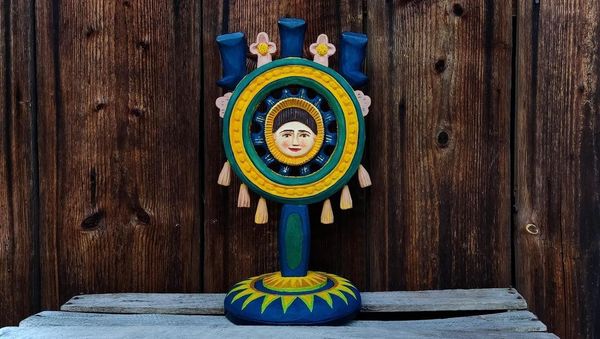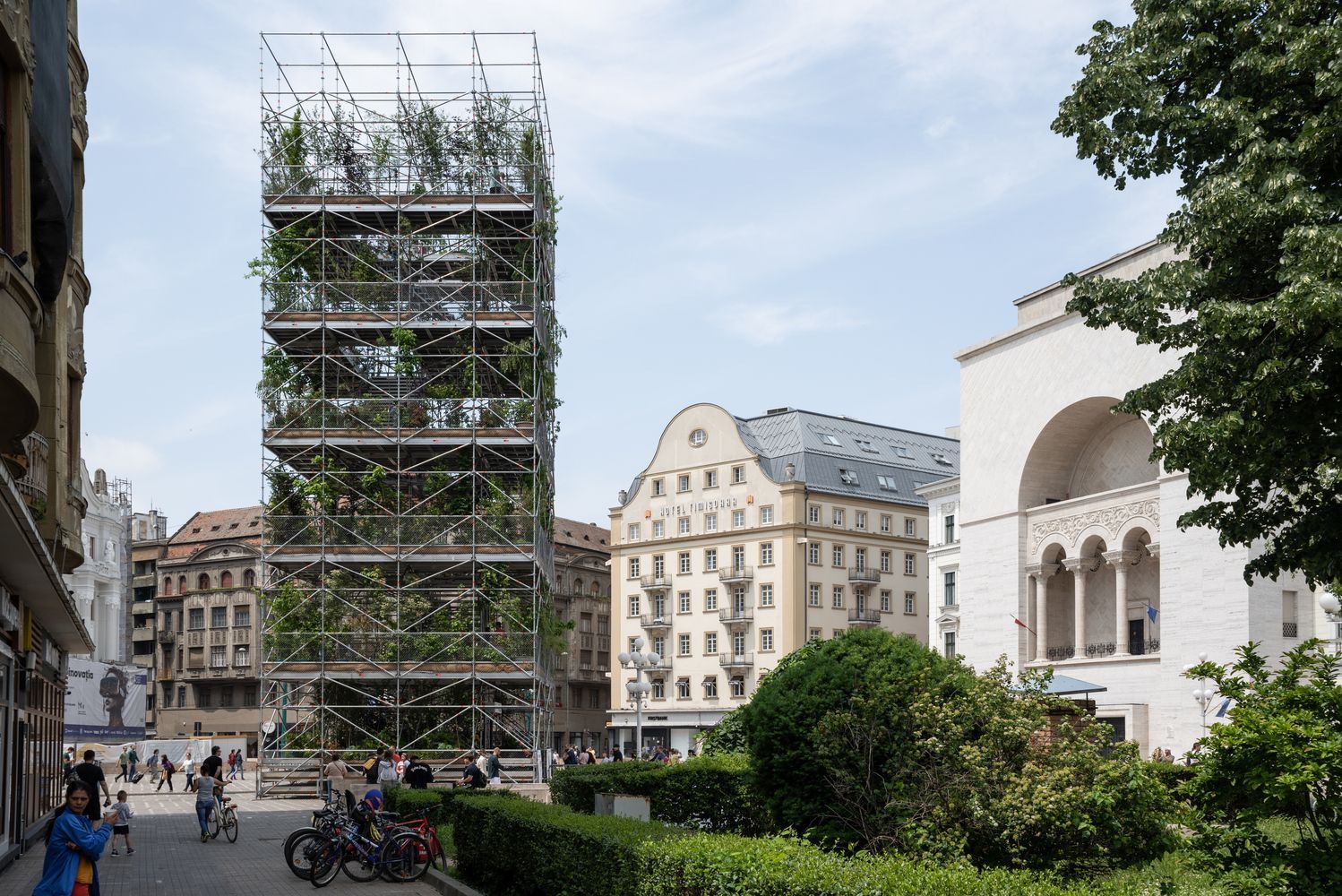From five storeys high, a vertical tree nursery overlooks the main square of Timișoara—an installation in the framework of the Timișoara European Capital of Culture 2023 program, which is a testimony to the harmonious coexistence of nature and the built environment. The Nursery.1306 plants for Timișoara is a project designed by MAIO Architects of Barcelona, with the support of the Romanian Order of Architects (OAR) and the City Hall, the Horticulture of Timișoara, and the University of Agricultural Sciences.
Timișoara’s main square (formerly Opera Square), a landmark site in the city, is rarely used as a place to rest or stay: its transit zone character means that passers-by perceive it mostly horizontally while commuting through. The Nursery.1306 plants for Timișoara located here is an installation that puts the central square into a new perspective, questioning the way we relate to it. Each level of the ephemeral, modular metal structure functions as a viewpoint, telling the story of Timișoara and serving as a venue for cultural events. In fact, the resulting public installation combines functionality, sustainability, and aesthetics.


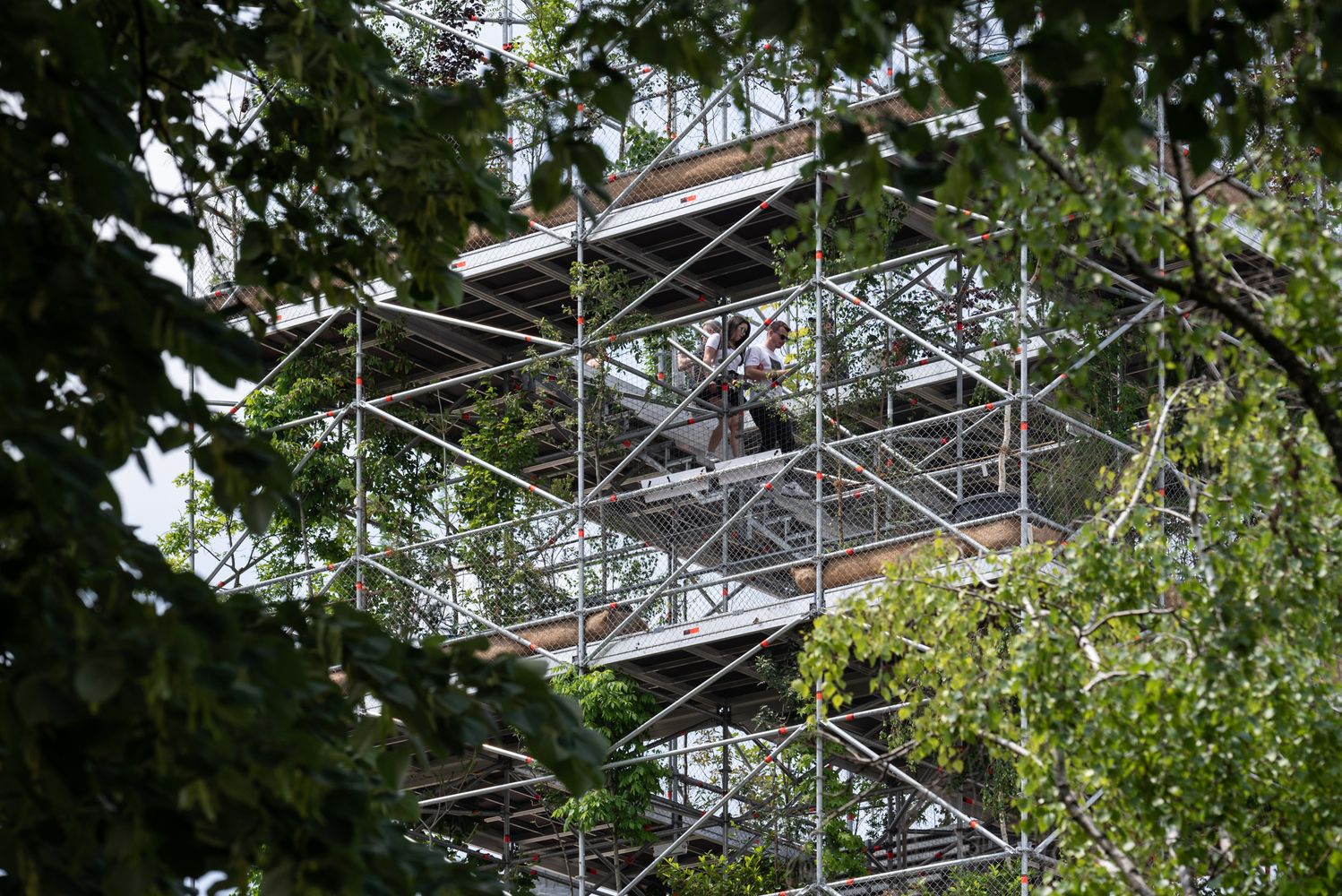
The city’s rich architectural heritage is characterized by a diversity of styles, such as a mix of Baroque, Art Nouveau, and Modernism. The scaffolding that forms the skeleton of the installation evokes temporary structures or construction sites, contrasting them with the city’s distinctive architecture. In this way, the modern scaffolding and the architectural diversity surrounding it create a link between the past and the future, drawing attention to the city’s changing needs and aspirations. This controversy also creates a kind of visual tension: the installation’s unusual appearance draws attention to itself and is intended to open up a dialogue on the relationship between tradition and innovation.
Another characteristic of the nursery is that the selected flora covering each level is inspired by urban biodiversity. As part of the vegetation is made up of edible plants, these vertical green layers not only contribute to a healthier urban ecosystem but also promote the emerging practice of urban gardening.
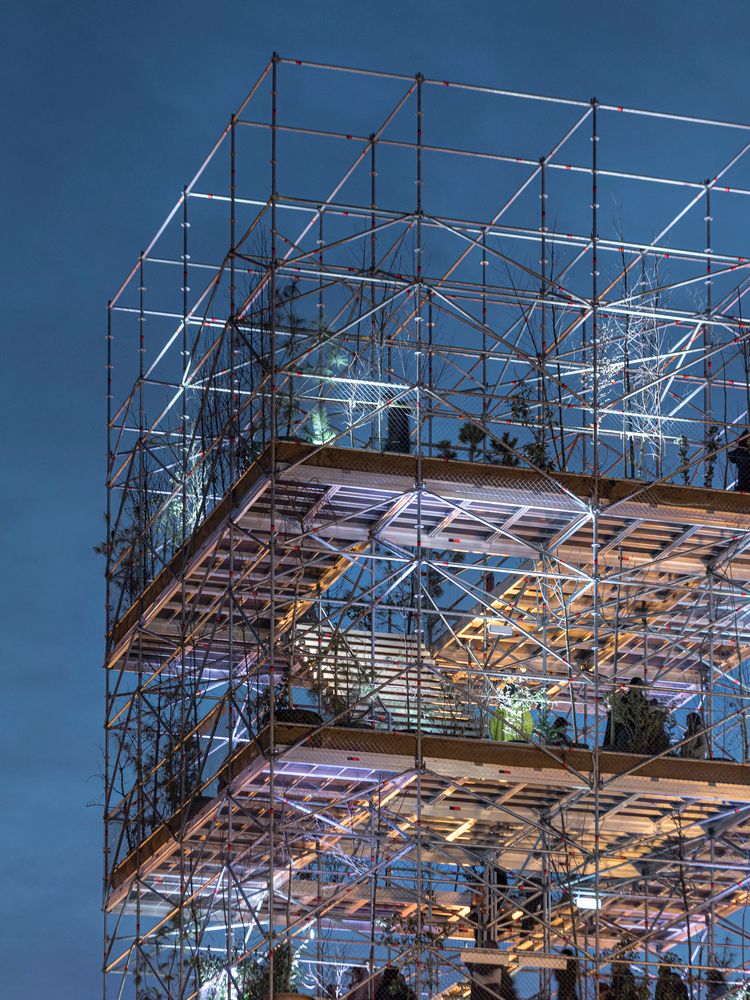
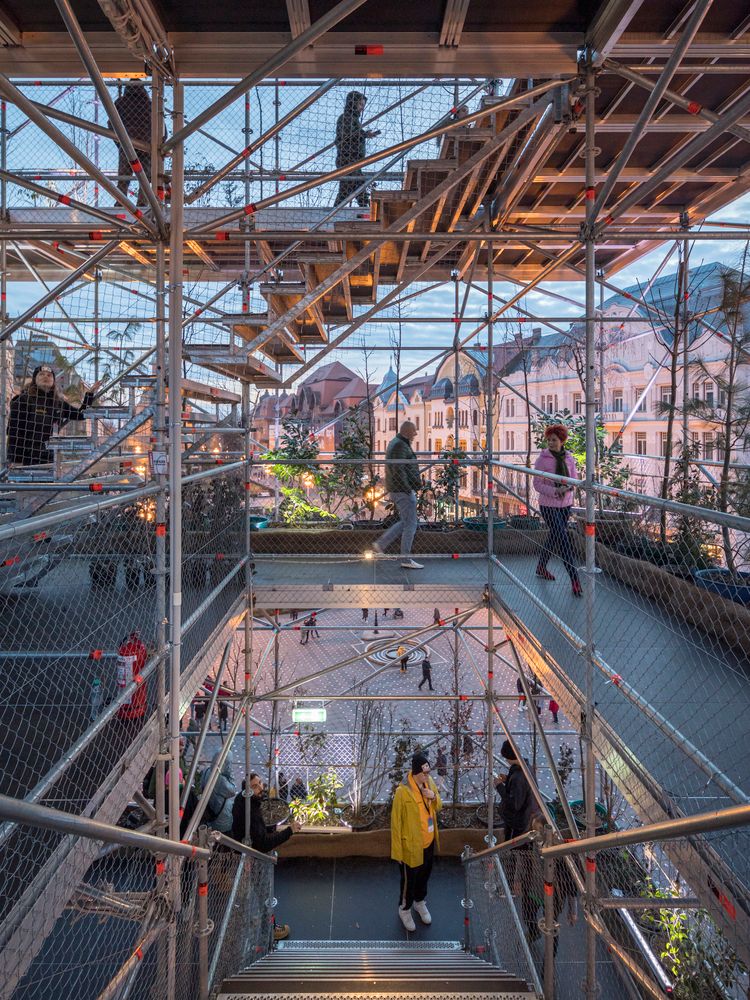
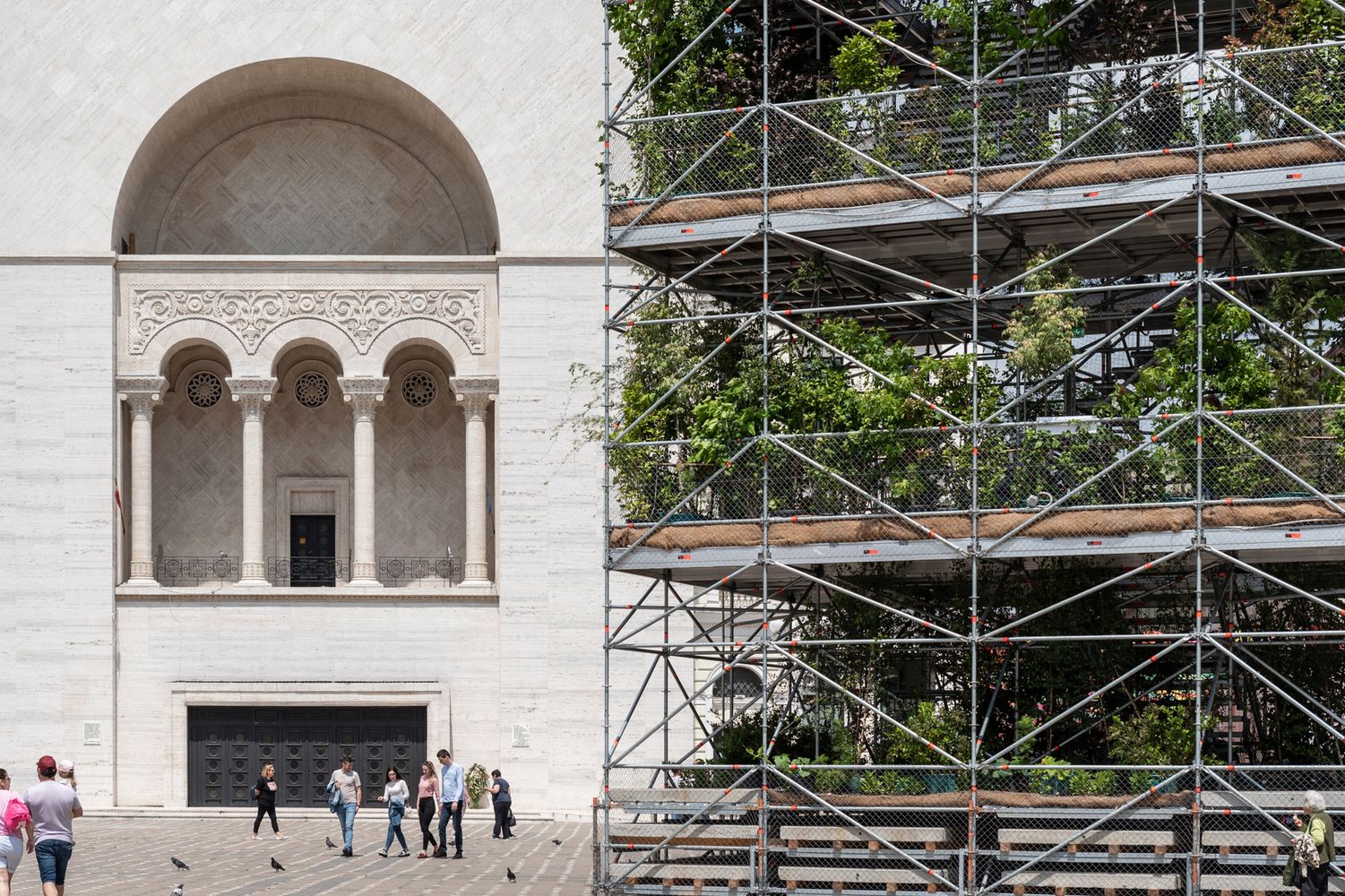
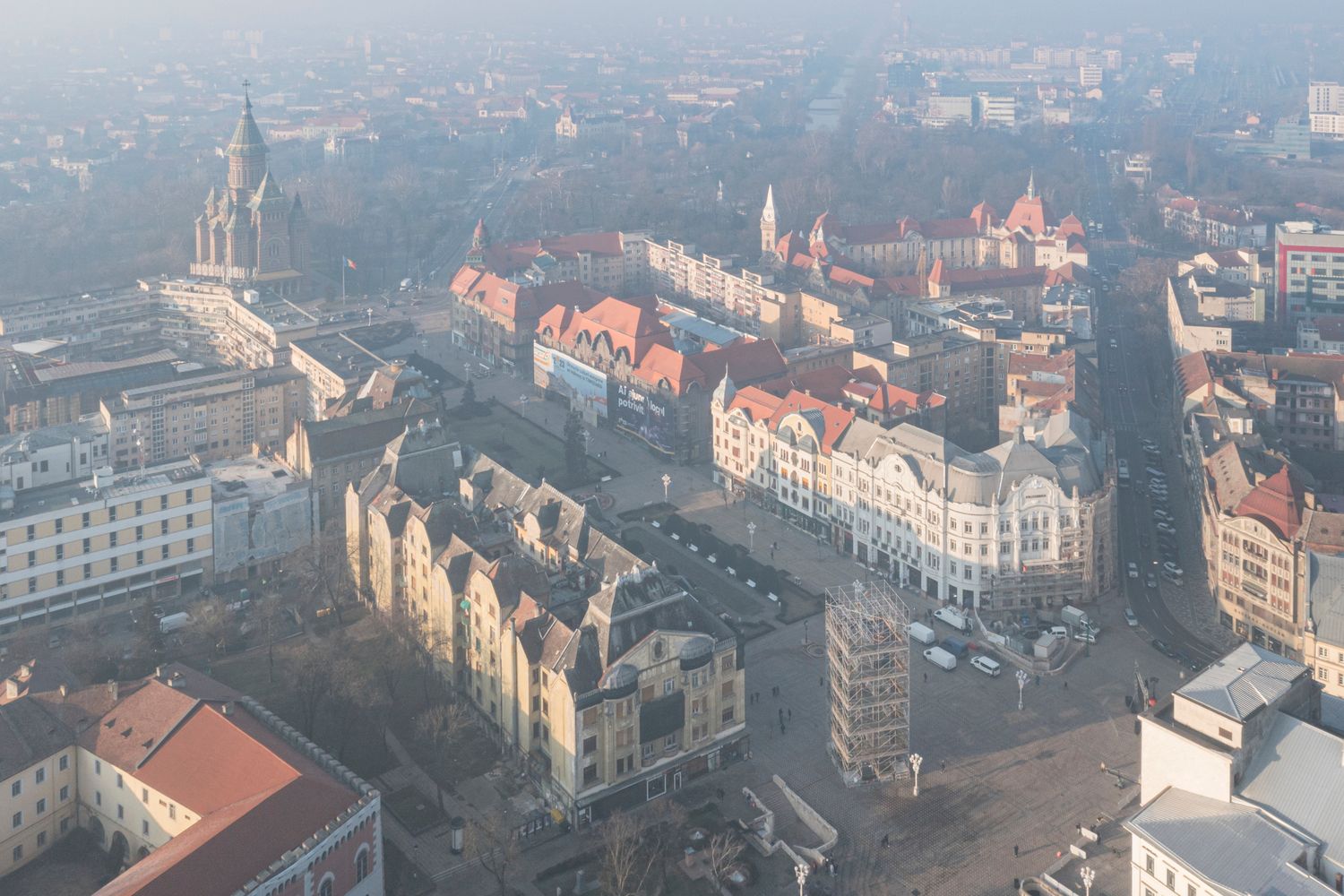
The hanging garden installation in Timișoara will be open to the public in the city’s Victory Square until the end of November, after which the 1306 plants will be moved to public spaces and parks in Timișoara, and the scaffolding will be used for other cultural, architectural, or performative projects.
Photos: Marius Vasile, Laurian Ghinițoiu
Source: ArchDaily
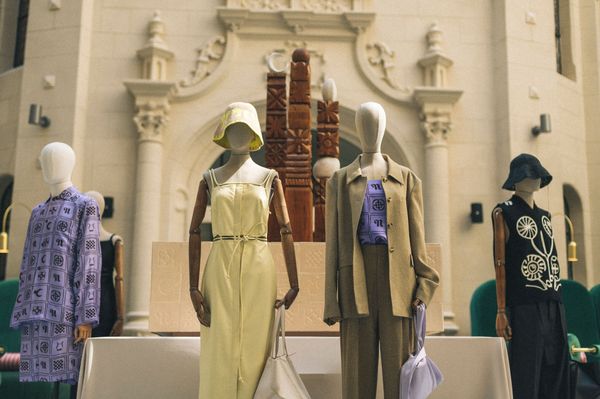
W Budapest celebrates fashion with Nanushka collaboration at the end of August
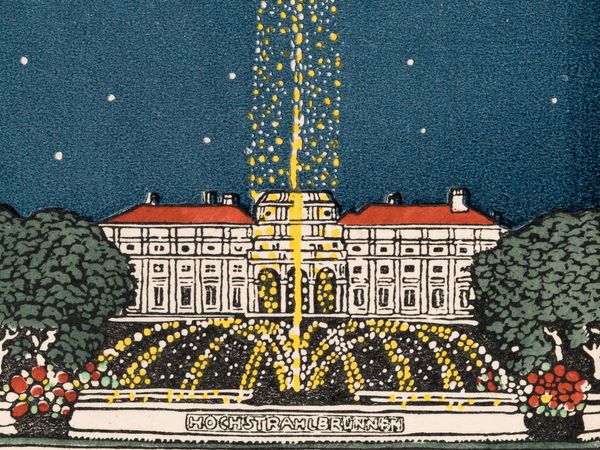
Colorful postcards bring turn-of-the-century Vienna to life
